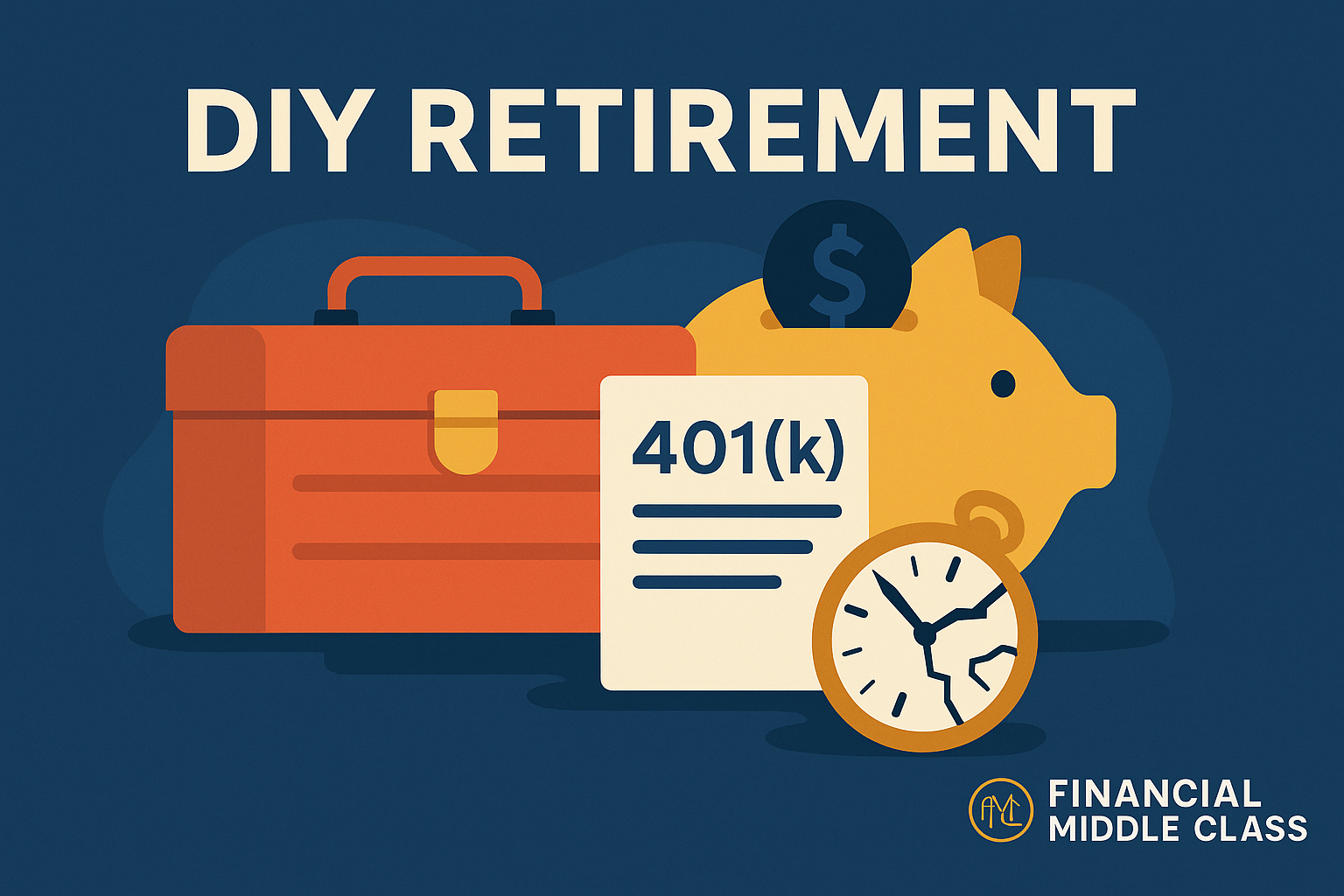The Plain‑English Take
There was a time when a steady paycheck, a pension, and a gold watch weren’t a fantasy. They were the deal. If you put in decades, the company carried the risk: markets, longevity, healthcare. In the 1980s, the deal flipped. Policy, corporate finance, and a collapse in worker bargaining power rewired incentives. Retirement shifted from pooled, employer‑run guarantees to do‑it‑yourself accounts where you shoulder the market swings, the fees, and the risk of outliving your money. This piece is about what changed, why it changed, and what middle‑class households can actually do about it right now.
What Changed (and Why)
1) Tax and legal architecture opened the door. Congress wrote §401(k) into law in 1978; the IRS clarified in 1981 that workers could defer salary into employer plans. The 401(k) wasn’t born as a grand social design—it grew because the tax code and HR departments found each other.
2) Corporate finance made cash-to-shareholders king. In 1982, the SEC created a “safe harbor” for stock buybacks (Rule 10b‑18). From there, repurchases took off. When buybacks and dividends become the default use of profits, long‑term benefit promises compete with Wall Street’s clock.
3) Bargaining power eroded. Union membership has marched down for four decades. Fewer workers at the table means fewer pensions, weaker retiree health coverage, and more cost‑sharing.
Translation: The incentives were rebuilt so that employers could stay flexible, investors could get cash on schedule, and workers would fund and manage their own retirement risk.
From Pensions to Portability—With a Catch
Defined‑benefit (DB) pensions promised a lifetime annuity. They pooled risk at the employer level. Your job was to show up and stick around.
Defined‑contribution (DC) plans—401(k)s and cousins—are portable and individualized. That flexibility sounds great until you notice the catch: you carry the investment risk, the longevity risk, and the behavioral risk. You must opt in, choose a rate, pick investments, rebalance, avoid panic selling, and never cash out when you change jobs.
Meanwhile, retiree health coverage shrank. At many private employers it disappeared. Active‑employee premiums rose faster than wages. Those dollars crowd out retirement savings, especially for middle‑income families.
Add the pay‑productivity gap. Since the late 1970s, productivity outpaced typical compensation. When the pie grows faster than your slice, you can’t save your way around it without structural help.
Why DIY Under‑Delivers for Too Many Households
Coverage isn’t universal. Access to a plan still depends on where you work, how big the firm is, and what you earn. Participation drops when budgets are tight.
Leakage is brutal. Cashing out a small balance at job change feels harmless. It’s not. Repeat it twice or three times over a career and you can amputate 15–25% of your eventual nest egg. That’s the power of compounding—in reverse.
Healthcare costs squeeze the middle. Premiums and out‑of‑pocket costs keep rising. The dollars that should feed the 401(k) get eaten at the pharmacy and the doctor’s office.
Financialization sets the drumbeat. When repurchases and dividends are treated as “table stakes,” long‑horizon benefits are the flexible line item. The signal you hear as a worker is simple: you’re on your own.
The Upside of the DC Era—And Its Limits
Let’s be fair. Auto‑enrollment and auto‑escalation are real wins. In plans that use them, participation often jumps from the 60s to the 80s or 90s, and savings rates climb over time. Target‑date funds reduce the guesswork. State auto‑IRAs are pulling in workers who never had an employer plan. SECURE 2.0 pushes auto‑enrollment for new plans and turns today’s Saver’s Credit into a federal Saver’s Match in 2027.
But none of that solves the two structural failures: (1) coverage gaps and (2) leakage. If you don’t get into a plan—and stay in it—compounding never has a chance to work for you.
What Would Actually Move the Needle
1) Universal coverage by default. Auto‑enroll every worker—either through employer plans or a national auto‑IRA backstop.
2) Portability that kills leakage. Make rollovers the default at job change. Shrink the paperwork. Put a bold, one‑page “don’t cash out” projection in front of every separating worker.
3) An emergency sidecar. Auto‑fund a small liquid account alongside the 401(k). When life hits, you tap the sidecar—not your retirement.
4) Rebuild retiree‑health scaffolding. Pre‑fund with HRAs/VEBAs or pooled marketplace options so medical inflation doesn’t wreck retirement math.
5) Wage policy is retirement policy. A federal floor frozen for years guarantees retirement is optional for millions. If the bottom rung is too far from the second, people don’t climb.
6) Corporate transparency on human‑capital spend. Put multi‑year wages, training, benefits, dividends, and buybacks on the same scoreboard so investors can see tradeoffs—then reward firms that invest in people.
What Middle‑Class Households Can Do Right Now
Default hard; personalize later. If your plan offers automatic features, keep them on. The defaults are there to save you from decision fatigue.
Fight leakage like your retirement depends on it—because it does. Never cash out at separation. Roll balances forward. One leak today compounds into a hole tomorrow.
Budget for health costs. Treat healthcare inflation as a known headwind in your savings rate. If your premiums jump, adjust early rather than stopping contributions altogether.
Build a small, liquid buffer. Even $1,000–$2,500 prevents 401(k) raids when life happens.
Use target‑date or managed options unless you love asset allocation. Set it and stick with it through the cycle.
Bottom Line
We don’t need to resurrect 1965. We need to restore pooling and smart defaults where human behavior and the market structure predictably fail. Universal auto‑coverage. Leakage‑proof portability. An emergency sidecar. Honest corporate reporting. Do that, and the “DIY” label stops being a euphemism for “you’re on your own” and starts being a system that works for ordinary, busy families.
